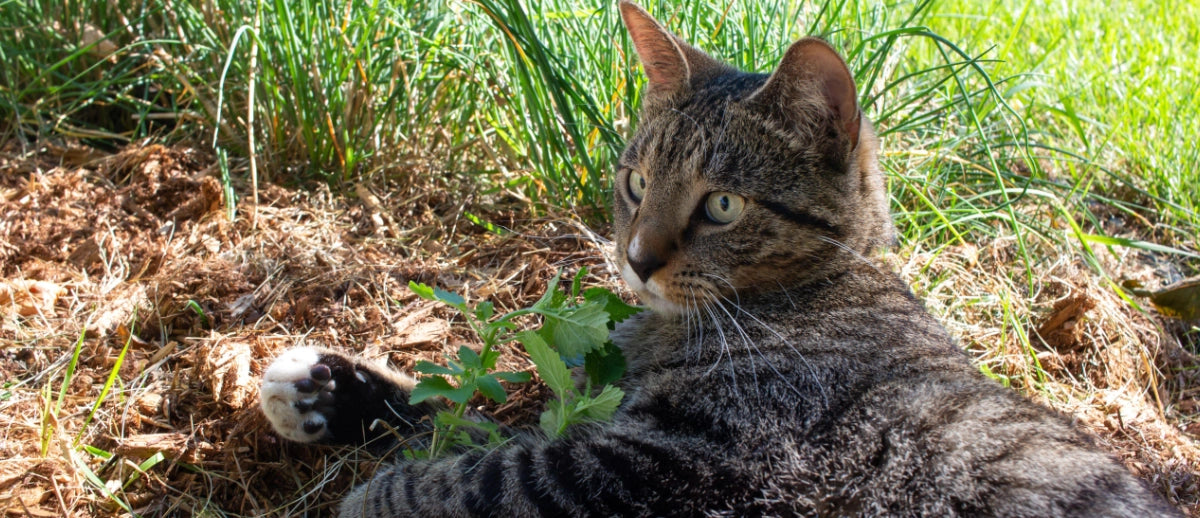Catnip (Nepeta cataria) is a more aromatically potent but less showy member of the catmint family, but all have a history of culinary or medicinal use by humans. While U.K gardeners interchange the terms "catnip" and "catmint" when referencing Nepeta cataria, we on this side of the Atlantic prefer to differentiate between different varieties of the genus.
All catmints are herbaceous perennials with a deep taproot. Like old-school ditch weed, catmints do well in poorer soils with low to moderate moisture. Native to Europe, Africa, and Asia, catmint has naturalized in North America, and often pops up in vacant lots, along country roads, and below the windows of high school shop classes.
Like other members of the mint family (Lamiaceae) which includes thyme and sage, catmint is a mounding herb that grows in long, upright, square stems. Serrated, hair covered, arrowhead-shaped, vivid green leaves grow along the stems in alternating pairs, and dense clusters of two-inch white, blue or lavender flowers bloom from June through October.
Catmint attracts honey bees and other pollinating insects, and some gardeners report seeing hummingbirds visiting catmint flowers.
Catmints do well in USDA zones 4-10, but can be grown as an annual elsewhere or an indoor perennial if given a nice sunny windowsill.
They prefer full sun but do very well in partial shade, and their tolerance for drought—even more so than other mints—makes them good candidates for the far corners of your garden.
Catmint sizes depend upon variety and growing conditions. The showy Nepeta mussinii can grow 24-36" tall and about 12"-30" inches wide, while catnip grows 18-24 inches.
All catmints can be "trained" to maintain a more compact, bushy shape by pinching off upper stems and leaf buds. This is the preferred method for harvesting fresh leaves from all catmint varieties, and for maintaining the appropriate plant size for indoor potted catnip.


